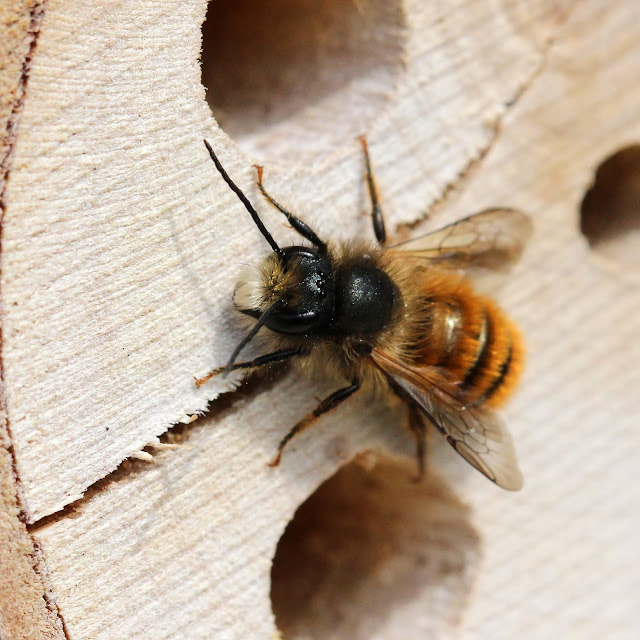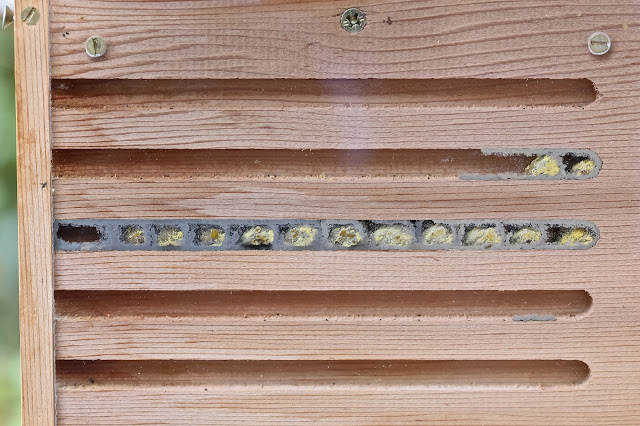It was only eight weeks ago that I saw my first male red mason bee but their season is now over. All the adults have died, leaving their eggs hatching into larvae, eventually to provide the next generation next year.
These are early season males on the look out for females.
Later on the males had lost most of their colour and looked like this.
Here is one of the first females resting in a hole in the bee house. There is a good view of the two horns on her face used for manipulating the mud (hence Osmia bicornis).
This one is looking out of the entrance, about to collect more pollen.
Two bees started building in the observation wing. The top bee disappeared before finishing her second cell - she was probably eaten by a bird or spider.
Here is the lower bee either unloading pollen or laying an egg.
Here she is returning with a load of mud for the next cell wall.
She eventually filled 11 cells and then sealed the entrance, leaving the front cell empty.
A few days later I noticed the cell had been attacked and the front two cells raided, probably by a woodpecker.
Here is another bee just finishing the seal to her nest.
We are just starting the leaf cutter bee season here - expect a report on the blog in the near future.
















Wonderful to see the observation nest cells. How many of the eggs survived and hatched in the end?
ReplyDeleteHi Emily. Only three of my last year cells produced cocoons (most were parasitised) but all three emerged. All of the 30 I bought also emerged. Despite me quishing all the flies I saw it looks as though the parasite rate will be high again this year. Maybe that's the norm? I think I might buy some more cocoons next winter to try to boost the population.
Delete